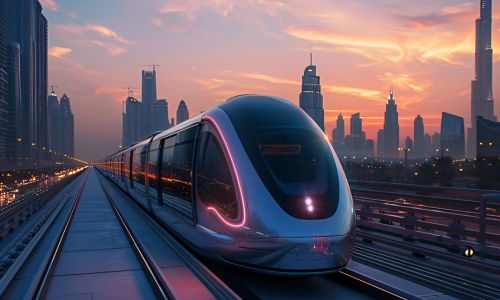GCC to launch $15 billion high-speed regional railway by 2030
TDT | Manama
The Daily Tribune – www.newsofbahrain.com
Report by Mohammed Darwish
The Gulf Cooperation Council (GCC) has announced the launch of a groundbreaking regional railway network, which will start operations by December 2030. This ambitious $15 billion project, involving 33 stakeholders, aims to transform transportation and economic integration across the Gulf states.
Spanning an impressive 2,217 kilometers, the railway’s first phase in Kuwait covers 111 kilometers, with trains projected to achieve speeds between 200 and 250 km per hour.
Travel time from Kuwait to Riyadh, spanning approximately 640 kilometers, will be reduced to just 150 minutes, down from the current 6.45 hours by car. The railway’s strategic route will link Kuwait, Saudi Arabia, Bahrain, Qatar, the United Arab Emirates, and Oman, establishing a seamless transportation network across the region.
The railway’s route will connect Kuwait to Saudi Arabia, then onward to Bahrain, Qatar, the United Arab Emirates, and finally Oman, creating a seamless transportation network across the region.
Catalyst
Economists are heralding the Gulf Railway as a catalyst for unprecedented economic growth. The project aims to achieve the long-sought common Gulf market and accelerate economic unity among the GCC countries.
By facilitating the easy and rapid movement of people, goods, and labour between member states, the railway is expected to enhance trade exchange and bilateral operations, akin to the integrated economies of the European Union. Furthermore, the project is anticipated to drive down prices in the region by reducing the costs of transporting goods, food, travel, and labour.
This improved economic efficiency is expected to enhance the Gulf countries’ overall economic power, while also improving regional communication and reducing transportation times between major cities and ports.
Investment
Analysts believe the Gulf Railway will not only spur economic growth but also attract significant investment to the region, positioning the GCC as an integrated, interconnected economic powerhouse on the global stage.
The project is also expected to contribute significantly to the economic growth, development and prosperity of the region, diversifying the available means of transportation and reducing transportation costs.
The project will also work to enhance and facilitate regional trade and support the national industries of the GCC countries.
It will also contribute to providing job opportunities for citizens of the GCC countries, in addition to building the institutional capabilities and skills required to develop railway sustainability.
Causeway
The King Hamad Causeway project will connect the Kingdom of Bahrain with the Kingdom of Saudi Arabia through the construction of a bridge parallel to the King Fahd Causeway, which includes four vehicle lanes and two railway tracks.
The 57-kilometre railway line will connect the King Hamad International Passenger Station with the railway station in the Dammam region in the Kingdom of Saudi Arabia.
The King Hamad Causeway is a new artery linking the Kingdom of Bahrain and the Kingdom of Saudi Arabia.
Its idea began in 2014. It is 25 kilometres long and will be parallel to the King Fahd Causeway, aiming to enhance economic cooperation.
It is expected that the number of passengers using the GCC railway will reach about 8 million per year by 2050.
The railway station in the Dammam region will be linked to all internal railway lines in the Kingdom of Saudi Arabia, and the King Hamad International Passenger Station will be linked to the network.
The Bahrain Metro, to be built locally, will connect to the passenger terminal at Bahrain International Airport and the vital commercial and residential areas in the Kingdom. Commercial operations will flourish.
The King Hamad Causeway project will also add greater capacity by creating four vehicle lanes parallel to the current road to avoid congestion on the bridge.
Related Posts

